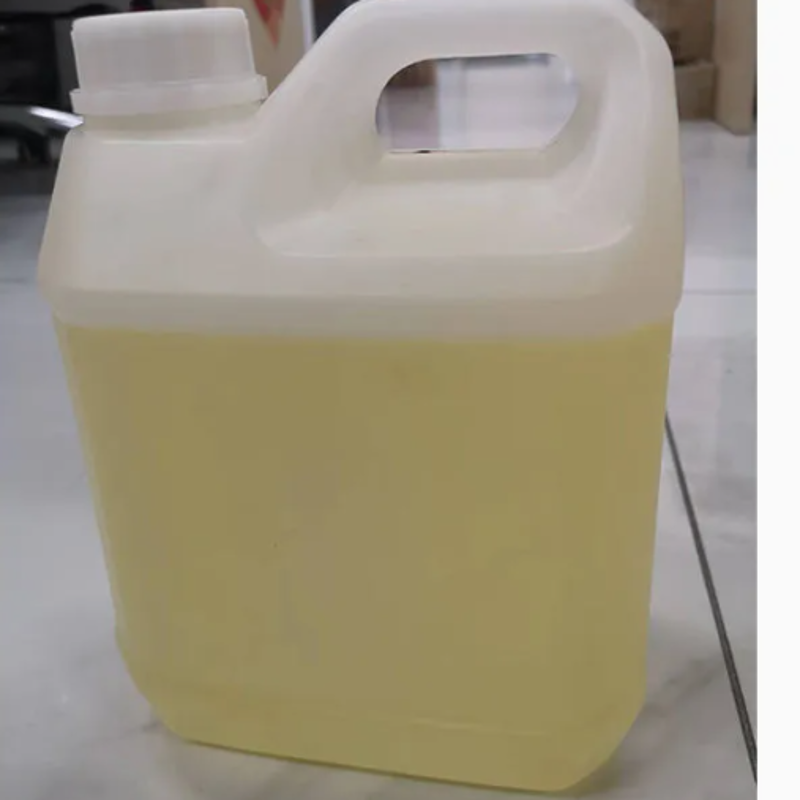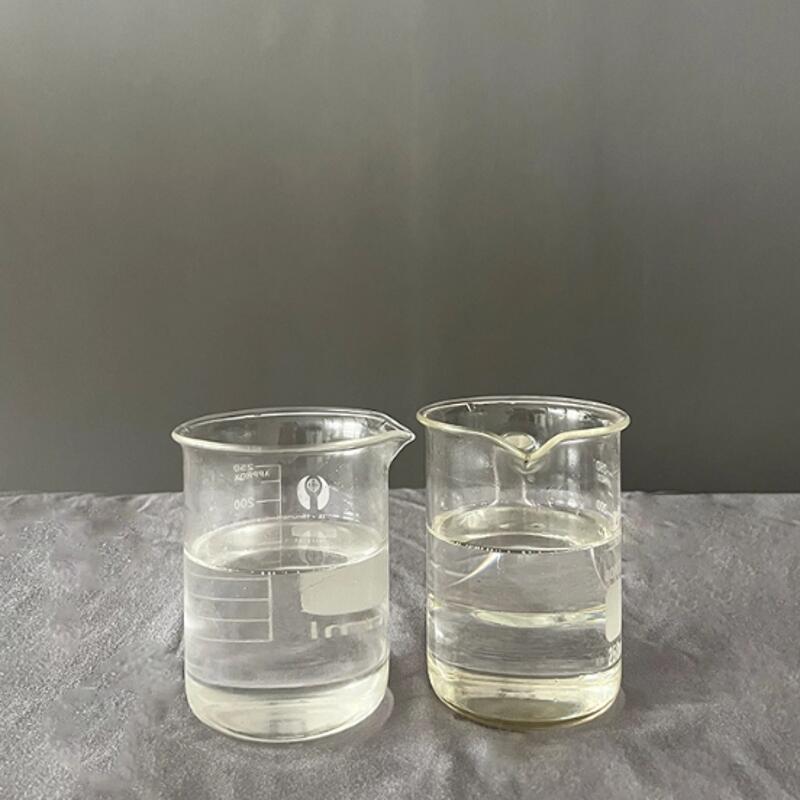-
Categories
-
Pharmaceutical Intermediates
-
Active Pharmaceutical Ingredients
-
Food Additives
- Industrial Coatings
- Agrochemicals
- Dyes and Pigments
- Surfactant
- Flavors and Fragrances
- Chemical Reagents
- Catalyst and Auxiliary
- Natural Products
- Inorganic Chemistry
-
Organic Chemistry
-
Biochemical Engineering
- Analytical Chemistry
-
Cosmetic Ingredient
- Water Treatment Chemical
-
Pharmaceutical Intermediates
Promotion
ECHEMI Mall
Wholesale
Weekly Price
Exhibition
News
-
Trade Service
The U.
S.
Department of Agriculture released the latest statistics: In 2019, the global soybean production was 337.
704 million tons, of which China’s soybean production was about 18.
100 million tons, accounting for 5.
36% of the world’s total soybean production
.
Can soy residue and fruit cellulose be converted into sustainable packaging materials? This article will reveal the answer for you
.
The U.
S.
Department of Agriculture released the latest statistics: In 2019, the global soybean production was 337.
704 million tons, of which China’s soybean production was about 18.
100 million tons, accounting for 5.
36% of the world’s total soybean production
.
Can soy residue and fruit cellulose be converted into sustainable packaging materials? This article will reveal the answer for you
.
1.
Soybean cellulose packaging
William Chen, a professor of food science and technology at Nanyang Technological University in Singapore, has invented a biodegradable food packaging made of cellulose derived from waste generated by manufacturers of soy products
.
The soybeans are crushed and the juices that are used to make tofu and soy milk are squeezed out, Chen explained
.
Although cellulosic-based plastic packaging has been on the market for several years, most plastic packaging has been researched to be made from raw materials such as wood or corn
.
Chen's technology can solve two problems at the same time: reducing plastic production and food waste in landfills
.
Soy beverage maker F&N has partnered with Chen's lab to supply the residue directly from the factory
.
Chen said the company is conducting a feasibility study to assess whether the food packaging can compete commercially with conventional products
.
Scalability can sometimes be a problem to overcome for bioplastics, which are often more expensive to produce than petrochemicals
.
Because the raw materials are free, soy packaging in the lab "costs almost nothing," Chen said, while commercial-scale production would involve additional costs, such as storage and quality control
.
Biodegradability is another potential hurdle.
Some bioplastics will only decompose completely when exposed to temperatures over 50 degrees Celsius for a long time.
People worry that if bioplastics are no longer processed in special facilities, will it also increase the problem of plastic pollution? Chen said that after the soy plastic packaging is decomposed by microorganisms, it will disappear completely within a month without reheating
.
2.
Durian shell plastic packaging
Soybeans aren't the only natural product Chen has developed bioplastics for.
Chen has also developed a fruit material that converts cellulose-rich durian shells into plastic packaging
.
Although the fruit doesn't smell very good, about 12 million durians are consumed each year in Singapore, so there is a plentiful supply of discarded husks, Chen said
.
Ultimately, he hopes that countries that grow soy a lot can take inspiration from his research to develop more environmentally friendly packaging with zero load
.
He added, "My dream is to keep developing technologies that are cheap and easy to implement to reduce plastic pollution and food waste and create a cleaner environment
.
"
1.
Soybean cellulose packaging
1.
Soybean cellulose packaging
1.
Soybean cellulose packaging
1.
Soybean cellulose packaging
1.
Soybean cellulose packaging
1.
Soybean cellulose packaging
1.
Soybean cellulose packaging
1.
Soybean cellulose packaging
1.
Soybean cellulose packaging
Soybean cellulose packaging
William Chen, a professor of food science and technology at Nanyang Technological University in Singapore, has invented a biodegradable food packaging made of cellulose derived from waste generated by manufacturers of soy products
.
The soybeans are crushed and the juices that are used to make tofu and soy milk are squeezed out, Chen explained
.
What's left is a porous residue, which is usually dumped
.
Chen puts the mushy leftover into the fermentation process, where microbes devour nutrients, leaving behind cellulose
.
William Chen, a professor of food science and technology at Nanyang Technological University in Singapore, has invented a biodegradable food packaging made of cellulose derived from waste generated by manufacturers of soy products
.
The soybeans are crushed and the juices that are used to make tofu and soy milk are squeezed out, Chen explained
.
What's left is a porous residue, which is usually dumped
.
Chen puts the mushy leftover into the fermentation process, where microbes devour nutrients, leaving behind cellulose
.
Although cellulosic-based plastic packaging has been on the market for several years, most plastic packaging has been researched to be made from raw materials such as wood or corn
.
In contrast, the packaging developed by Chen is made from scrap - so it doesn't compete for land with edible crops and is more sustainable
.
Chen's technology can solve two problems at the same time: reducing plastic production and food waste in landfills
.
According to reports, the total amount of food waste produced in Singapore every year can fill 15,000 Olympic-sized swimming pools, and soy products are very popular in Singapore, producing about 30 tons of okara every day
.
This technology can make full use of bean dregs, and it will be beneficial to the sustainable development of the environment
.
Although cellulosic-based plastic packaging has been on the market for several years, most plastic packaging has been researched to be made from raw materials such as wood or corn
.
In contrast, the packaging developed by Chen is made from scrap - so it doesn't compete for land with edible crops and is more sustainable
.
Chen's technology can solve two problems at the same time: reducing plastic production and food waste in landfills
.
According to reports, the total amount of food waste produced in Singapore every year can fill 15,000 Olympic-sized swimming pools, and soy products are very popular in Singapore, producing about 30 tons of okara every day
.
This technology can make full use of bean dregs, and it will be beneficial to the sustainable development of the environment
.
Soy beverage maker F&N has partnered with Chen's lab to supply the residue directly from the factory
.
Chen said the company is conducting a feasibility study to assess whether the food packaging can compete commercially with conventional products
.
Scalability can sometimes be a problem to overcome for bioplastics, which are often more expensive to produce than petrochemicals
.
Because the raw materials are free, soy packaging in the lab "costs almost nothing," Chen said, while commercial-scale production would involve additional costs, such as storage and quality control
.
Soy beverage maker F&N has partnered with Chen's lab to supply the residue directly from the factory
.
Chen said the company is conducting a feasibility study to assess whether the food packaging can compete commercially with conventional products
.
Scalability can sometimes be a problem to overcome for bioplastics, which are often more expensive to produce than petrochemicals
.
Because the raw materials are free, soy packaging in the lab "costs almost nothing," Chen said, while commercial-scale production would involve additional costs, such as storage and quality control
.
Biodegradability is another potential hurdle.
Some bioplastics will only decompose completely when exposed to temperatures over 50 degrees Celsius for a long time.
People worry that if bioplastics are no longer processed in special facilities, will it also increase the problem of plastic pollution? Chen said that after the soy plastic packaging is decomposed by microorganisms, it will disappear completely within a month without reheating
.
Biodegradability is another potential hurdle.
Some bioplastics will only decompose completely when exposed to temperatures over 50 degrees Celsius for a long time.
People worry that if bioplastics are no longer processed in special facilities, will it also increase the problem of plastic pollution? Chen said that after the soy plastic packaging is decomposed by microorganisms, it will disappear completely within a month without reheating
.
2.
Durian shell plastic packaging
2.
Durian shell plastic packaging
2.
Durian shell plastic packaging
2.
Durian shell plastic packaging
2.
Durian shell plastic packaging
2.
Durian shell plastic packaging
2.
Durian shell plastic packaging
2.
Durian shell plastic packaging
2.
Durian shell plastic packaging
Durian shell plastic packaging
Soybeans aren't the only natural product Chen has developed bioplastics for.
Chen has also developed a fruit material that converts cellulose-rich durian shells into plastic packaging
.
Although the fruit doesn't smell very good, about 12 million durians are consumed each year in Singapore, so there is a plentiful supply of discarded husks, Chen said
.
Soybeans aren't the only natural product Chen has developed bioplastics for.
Chen has also developed a fruit material that converts cellulose-rich durian shells into plastic packaging
.
Although the fruit doesn't smell very good, about 12 million durians are consumed each year in Singapore, so there is a plentiful supply of discarded husks, Chen said
.
Ultimately, he hopes that countries that grow soy a lot can take inspiration from his research to develop more environmentally friendly packaging with zero load
.
He added, "My dream is to keep developing technologies that are cheap and easy to implement to reduce plastic pollution and food waste and create a cleaner environment
.
"
Ultimately, he hopes that countries that grow soy a lot can take inspiration from his research to develop more environmentally friendly packaging with zero load
.
He added, "My dream is to keep developing technologies that are cheap and easy to implement to reduce plastic pollution and food waste and create a cleaner environment
.
"







